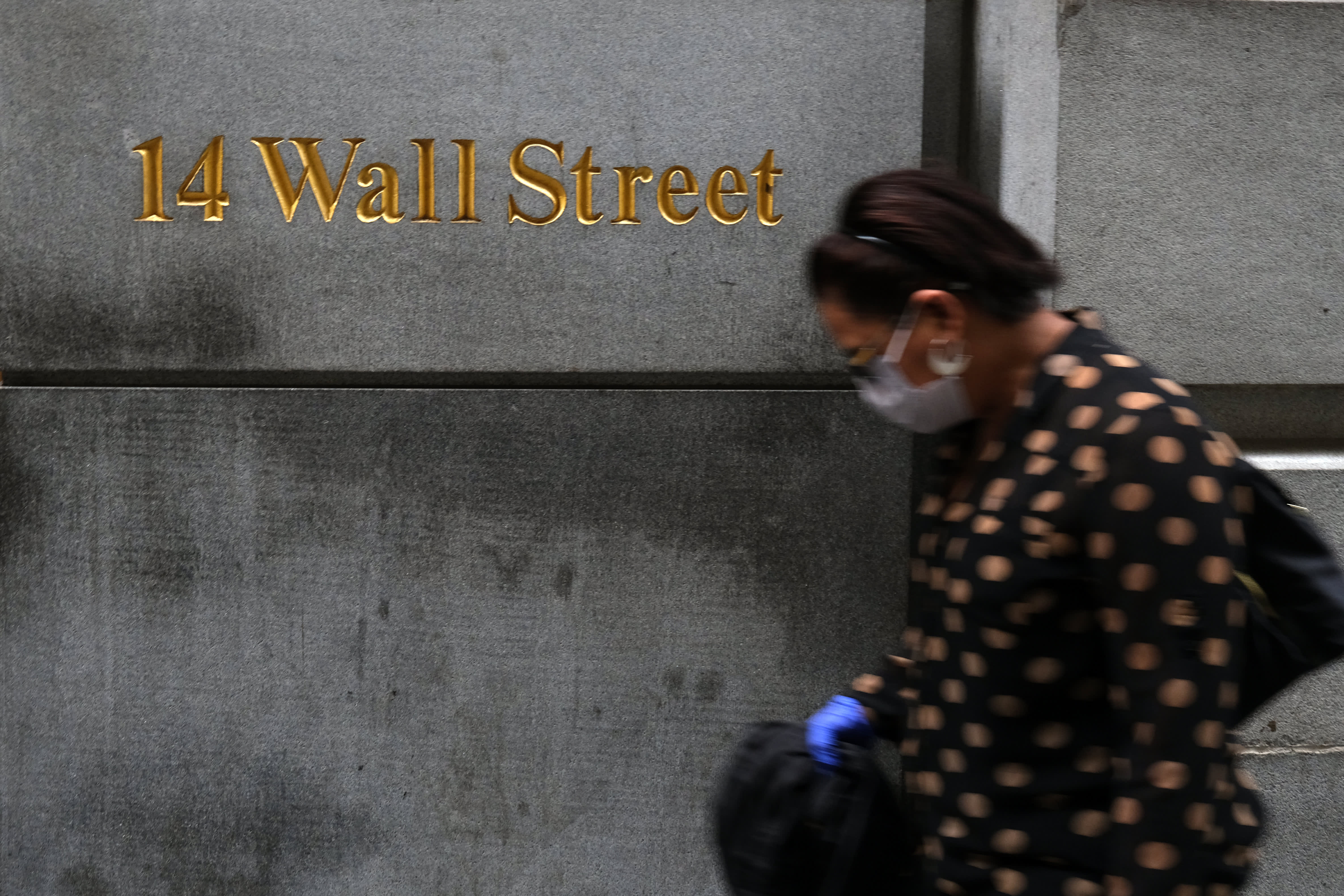Dow drops more than 250 points as Apple and Microsoft lead tech lower

Stocks fell in volatile trading on Thursday amid renewed pressure in shares of the major tech companies. Conflicting messaging on the coronavirus vaccine front and uncertainty around further stimulus also weighed on sentiment.
The Dow Jones Industrial Average slid 270 points, or about 1%. The S&P 500 dropped 1.5%. The Nasdaq Composite fell more than 2% and dipped into correction territory, down 10% from its all-time high.
Technology stocks, which weighed on the market Wednesday and were the source of the sell-off earlier this month, were down again. Facebook and Amazon were both down more than 3% along with Netflix. Alphabet traded 2.6% lower. Microsoft and Apple each dropped more than 2%. Snowflake, an IPO which captivated Wall Street on Wednesday as it doubled in its debut, was off by 12.6%
Thursday’s market gyrations come amid conflicting messages about the timeline for a coronavirus vaccine. President Donald Trump said late Wednesday that the U.S. could distribute a vaccine as early as October, contradicting the director of the Centers for Disease Control and Prevention, who told lawmakers earlier in the day that vaccinations would be in limited quantities this year and not widely distributed for six to nine months.
Traders were also monitoring the status of stimulus talks after President Trump suggested Wednesday he could support a larger package. However, Politico was reporting that Senate Republicans appeared reluctant to do so without more details on a bill.
“If we get a stimulus package and you’re out of the market, you will feel awful,” CNBC’s Jim Cramer said on Thursday.
“I do feel the stimulus package is very hard to get,” he said. “But if we do get it, you can’t be out of this market.”
Meanwhile, investors evaluated for a second day the Federal Reserve’s interest rate outlook where it indicated rates could stay anchored to the zero-bound through 2023 as the central bank tries to spur inflation. Fed Chairman Jerome Powell also pressed lawmakers to move forward with stimulus. While traders want low interest rates, they may be second guessing what rates this low for years means for the economic outlook.
The S&P 500 slid 0.5% on Wednesday in a late-day sell-off brought on by tech shares and a reassessment of the Fed’s forecast. Big Tech dragged down the S&P 500 and Nasdaq, with Apple, Facebook and Microsoft all closing lower. The S&P 500 was still up 1.3% this week heading into Thursday after posting its first two-week decline since May previously. But it now appears that comeback is fizzling.
Fed Chairman Jerome Powell said in a news conference easy monetary policy will remain “until these outcomes, including maximum employment, are achieved.”
Normally, the prospects of lower rates for a prolonged time period spur buying in equities but that was not the case on Wednesday.
“The major indices dipped back to their short-term trading range following the Fed’s announcements, confirming that bulls are still not out of the woods,” said Ken Berman, founder of Gorilla Trades. “While there was nothing scary in today’s Fed announcements, stocks reacted in a bearish fashion, especially in the tech sector.”
In economic news, the latest U.S. weekly jobless claims came in slightly better than expected. First-time claims for unemployment insurance totaled 860,000 in the week ending Sept.12, versus an estimate of 875,000, according to economists polled by Dow Jones.
— CNBC’s Yun Li contributed reporting.
Subscribe to CNBC PRO for exclusive insights and analysis, and live business day programming from around the world.




